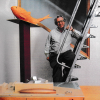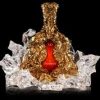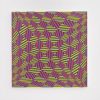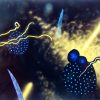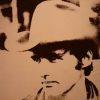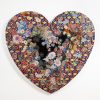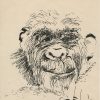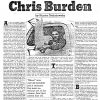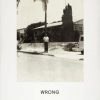Peter Alexander, who passed away at his home on May 26, was best known for his sculptures of cast resin inspired by the light and space and in his case the surf of his native Southern California. https://www.latimes.com/entertainment-arts/story/2020-05-28/peter-alexander-obit-light-and-space-artist-dies-at-81

Gunnel, 1984, mixed media collage on velvet
Less well-known are Alexander’s incredible unstretched black velvet paintings, at times embellished with stitching and beading by his then-wife Clytie Alexander, from the mid-1970s. Frank Gehry commissioned one for the longest wall of Rebecca’s, the unforgettable Venice restaurant he designed in 1986 for chef Bruce Marder.

Peter Alexander’s black velvet painting commissioned for Rebecca’s restaurant in Venice:
I interviewed Alexander many times over the years https://www.amazon.com/Rebels-Paradise-Angeles-Scene-1960s/dp/0805088369 but recently uncovered his inspiration for the black velvets from a brief profile that I did for the first issue of L.A. Exclusive in 1984. Alexander told me, “I wanted to paint on velvet but I had trouble finding the right image. One night, at about 3 a.m., I was out fishing with (artists) Ed Ruscha and Jim Ganzer. In the middle of the ocean we stopped to pick up squid and the Santa Ana winds were blowing. They used a big light to draw the squid up, like moth drawn to a flame. I was on deck looking down at all these incredible pink creatures wriggling and below them, there were sharks. Out of the arc of the light, two whales had surfaced, and they were blowing phosphorescence.”
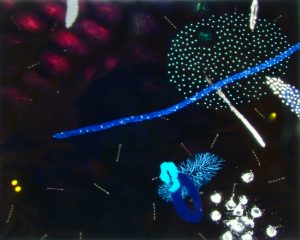
Dabs, 1982, mixed media on velvet, permanent collection LACMA
That incident inspired velvet tapestries of underwater imagery and later, glowing sunsets. They drew critical acclaim and puzzled condemnation but were included in the Museum of Modern Art’s International Survey of Recent Painting and Sculpture in 1984.
Alexander initially studied architecture at the University of Southern California and he worked for case study modernist Richard Neutra. “After all that, I found that I hated it.” He went back to school at UCLA for his Masters in Fine Art. “I’d done some painting when I was about seven. I found that what I had liked about architecture was drawing, the problems that you solved alone. I didn’t know anything about art at the time, I just had a strong visceral attraction to it.”
Alexander came onto the art scene in 1965 with his first cast resin sculptures but all of his work was unified to some degree by the reflected and refracted colors of Southern California. https://www.latimes.com/entertainment-arts/story/2020-05-28/peter-alexander-artist-dies-appreciation
At one point, his email handle was “puce.”
As Alexander said , “Resin casting is something I discovered out of surfing. I coated the boards with resin and knew the results.” His first resin boxes were environments, like Glass Rooms, that contained clouds. The sculptures matured as freestanding geometric forms of resin. “They spoke more of the material, thick at the bottom, thin at the top. They had the architectural influence but it was a California idea. It came from being in an airplane and looking at the water as it meets the shore, how the deep blue goes to nothing as it hits the sand like solidifying water.”
He added, “When you grow up here, every place else seems odd. By the time you realize there’s the rest of the world, it is too late.”
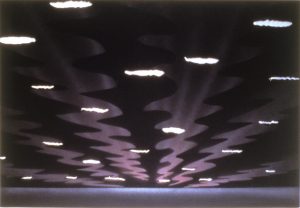
Untitled (Sunset), 1975, mixed media on velvet, 28 x 40
(Thank you to Parrasch Heijnen Gallery for these images)
